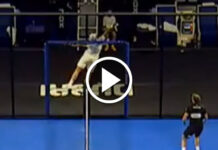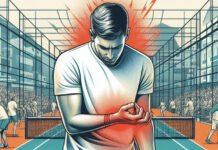Padel, a sport that has long captivated players in Europe and Latin America, is now making significant inroads in the United States. Its unique blend of tennis and squash elements, played on a smaller court with walls, has caught the attention of American sports enthusiasts.
The sport’s growth in the US can be attributed to its social nature and the ease with which newcomers can pick up the game. Unlike tennis, padel is played in doubles, which emphasizes teamwork and strategy over individual prowess. This aspect of the game has made it particularly popular among families and friends looking for a new way to spend time together.
Another factor contributing to padel’s popularity is the relatively low cost of constructing courts. Padel courts are smaller than tennis courts and can be built indoors or outdoors, making them a versatile option for sports facilities. This has led to a proliferation of padel clubs and courts across the country, from major cities to suburban communities.
The sport’s accessibility is also a key factor. Padel is less physically demanding than tennis, allowing players of all ages and fitness levels to enjoy the game. This inclusivity has broadened its appeal, drawing in a diverse group of players and fostering a welcoming community around the sport.
As padel continues to grow, it’s also creating economic opportunities. The demand for padel equipment and coaching has spawned new businesses, while existing tennis facilities are diversifying by adding padel courts to attract a wider clientele.
In conclusion, padel’s ascent in the US sports scene is a testament to its appeal as a fun, social, and accessible sport. With its continued growth, padel is poised to become a mainstay in American recreational activities, bringing people together on the court for years to come.

































